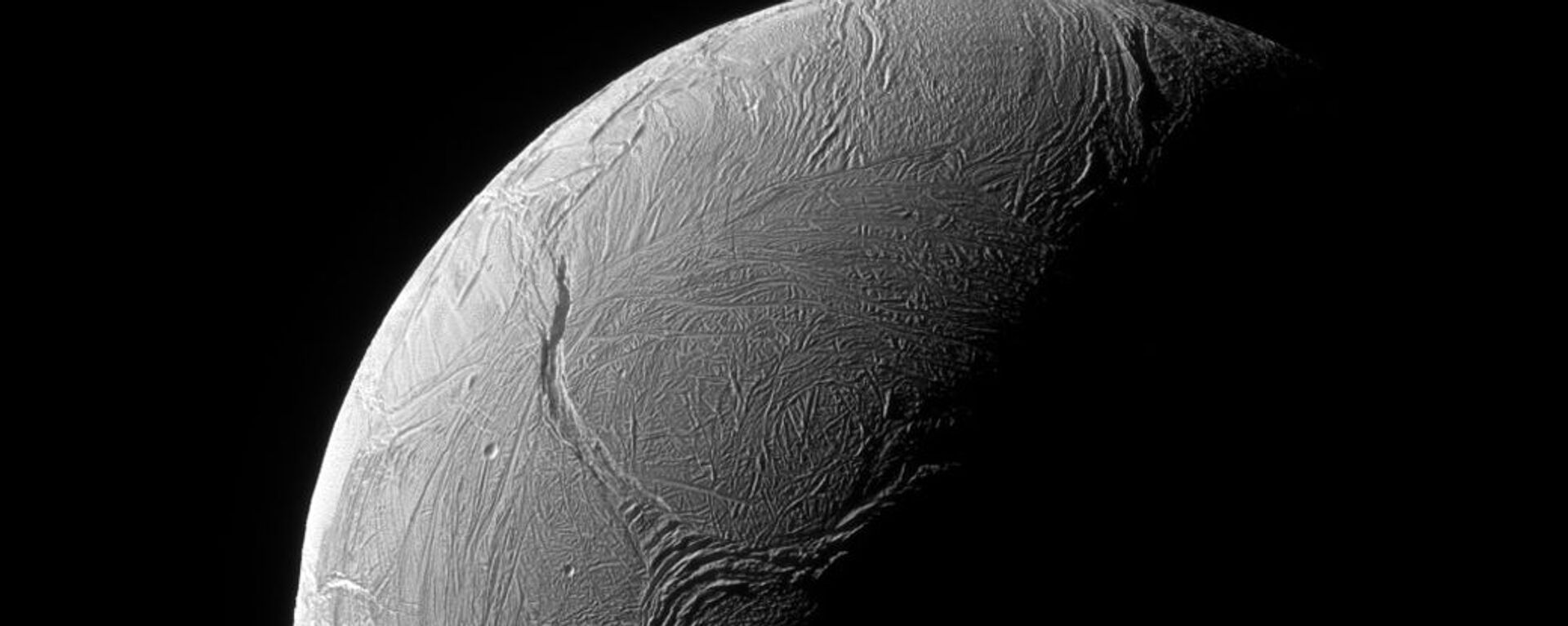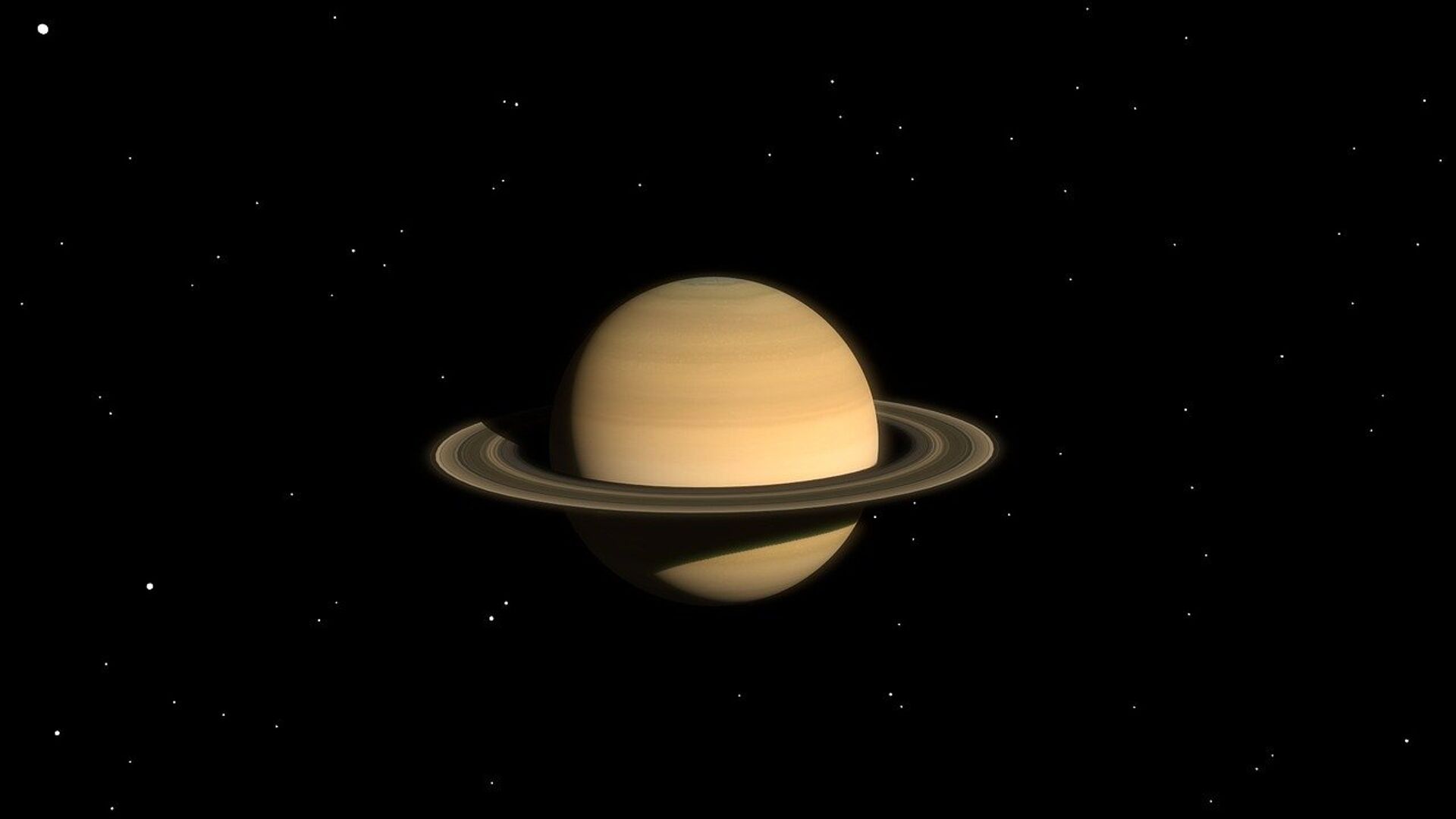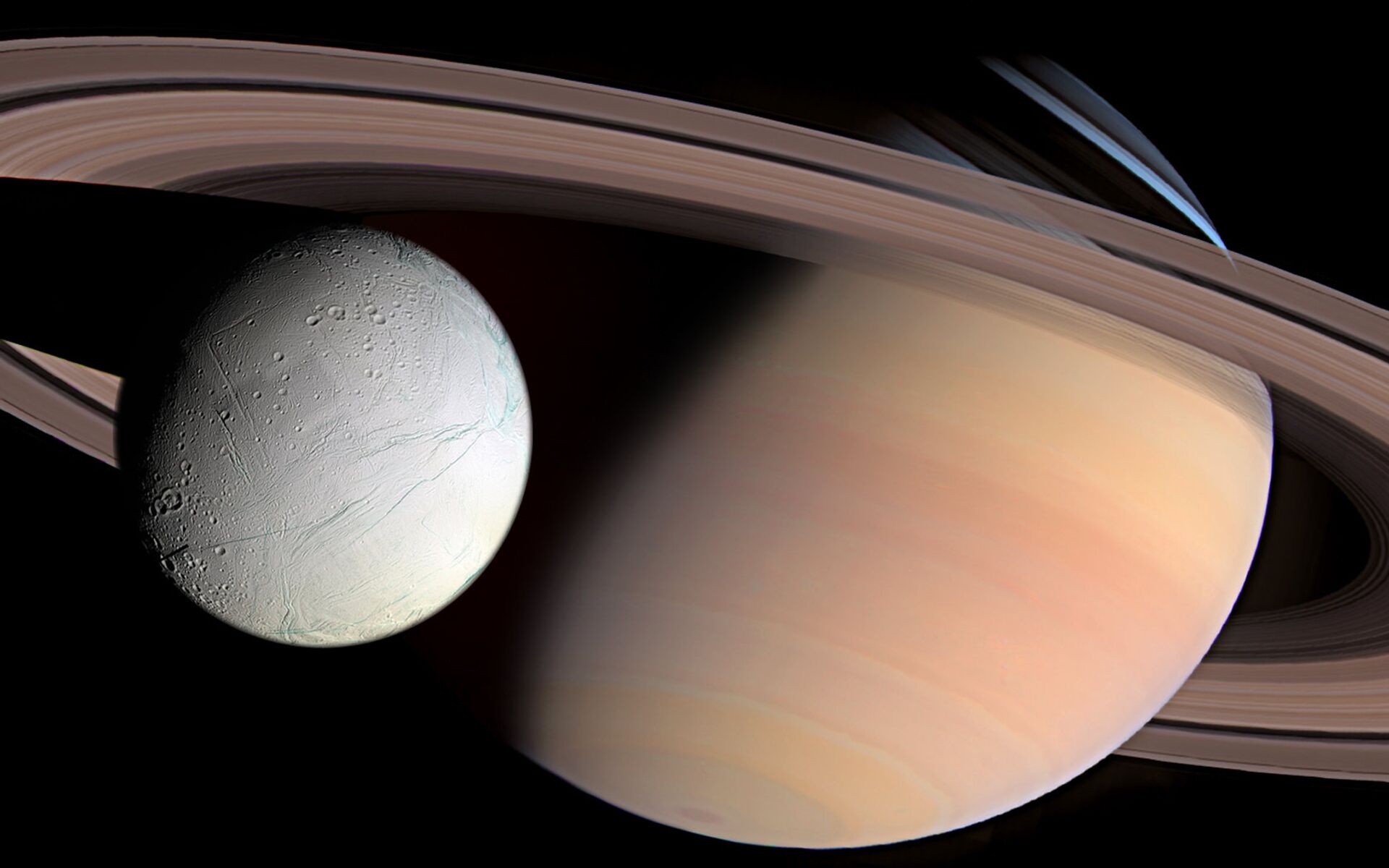https://sputnikglobe.com/20221229/no-need-to-land-or-drill-to-hunt-for-alien-life-hiding-on-saturns-moon-study-claims-1105883195.html
No Need to Land or Drill to Hunt for Alien Life Hiding on Saturn's Moon, Study Claims
No Need to Land or Drill to Hunt for Alien Life Hiding on Saturn's Moon, Study Claims
Sputnik International
A new study claims there is no need to land or drill to find clues of alien life hiding on Saturn's moon, Enceladus.
2022-12-29T12:41+0000
2022-12-29T12:41+0000
2023-04-21T10:43+0000
science & tech
saturn
alien life
enceladus
university of arizona
cassini probe
nasa
https://cdn1.img.sputnikglobe.com/img/105502/10/1055021014_0:0:1280:720_1920x0_80_0_0_a650e3300e2a20506c52ee3474f2671b.jpg
Alien life could be detected under the icy shell of one of Saturn’s 83 moons, Enceladus, without the need to drill into its crust or even land on its surface, new research claims.Sending an orbiting space probe could provide an answer to the mystery of whether there might be microbial life on the celestial body that has long been in the crosshairs of scientists, the study published in The Planetary Science Journal revealed.Ever since the presence of a warm saltwater ocean beneath a thick layer of ice on Enceladus was proven it has fueled the imagination of those hunting for alien life. When NASA's Cassinini probe, examining Saturn and its system, sampled water plumes that erupt through the surface of Enceladus, it found that these jets contained molecules with carbon, an essential part of life.A team of scientists from the University of Arizona and the French Université Paris Sciences et Lettres have calculated that signs of life could be discovered in plumes of water vapour emanating from the surface of the moon, located 800 million miles away from our Earth. The plumes emerge from cracks on the icy surface, drawn forth by Saturn's strong gravitational field.In their research last year, the team suggested that the fact that Saturn's moon was "burping up" methane (which can be produced by living organisms) in plumes could be taken as a likely sign of presence of life on Enceladus. Now, senior author of the new paper, Régis Ferrière, who is associate professor in the University of Arizona Department of Ecology and Evolutionary Biology, told media:Ferrière, who together with his collaborators offered the details of a hypothetical space mission, added:However, what would be more realistic is to rely on upgraded instruments to sample the plumes like Cassini did. If that did not work, the research suggested landing on the moon's surface.
https://sputnikglobe.com/20200124/scientists-say-saturns-moon-enceladus-may-contain-energy-sources-to-support-life-1078121411.html
Sputnik International
feedback@sputniknews.com
+74956456601
MIA „Rosiya Segodnya“
2022
News
en_EN
Sputnik International
feedback@sputniknews.com
+74956456601
MIA „Rosiya Segodnya“
Sputnik International
feedback@sputniknews.com
+74956456601
MIA „Rosiya Segodnya“
to find clues of alien life on saturn's moon, enceladus, to send orbiting space probe, microbial life, icy shell, warm saltwater ocean on enceladus
to find clues of alien life on saturn's moon, enceladus, to send orbiting space probe, microbial life, icy shell, warm saltwater ocean on enceladus
No Need to Land or Drill to Hunt for Alien Life Hiding on Saturn's Moon, Study Claims
12:41 GMT 29.12.2022 (Updated: 10:43 GMT 21.04.2023) Enceladus, Saturn’s moon, has long intrigued scientists, who have pointed to the celestial object's vast amount of water hidden under a thick crust of ice and assumed it might be a good place to look for life.
Alien life could be detected under the icy shell of one of
Saturn’s 83 moons, Enceladus, without the need to drill into its crust or even land on its surface, new research claims.
Sending an orbiting space probe could provide an answer to the mystery of whether there might be microbial life on the celestial body that has long been in the crosshairs of scientists, the study published in The Planetary Science Journal revealed.
Ever since the presence of a warm saltwater ocean beneath a thick layer of ice on Enceladus was proven it has fueled the imagination of those hunting for
alien life. When NASA's Cassinini probe, examining Saturn and its system, sampled water plumes that erupt through the surface of Enceladus, it found that these jets contained molecules with carbon, an essential part of life.
A team of scientists from the University of Arizona and the French Université Paris Sciences et Lettres have calculated that signs of life could be discovered in plumes of water vapour emanating from the surface of the moon, located 800 million miles away from our Earth. The plumes emerge from cracks on the icy surface, drawn forth by Saturn's strong gravitational field.
In their
research last year, the team suggested that the fact that Saturn's moon was "burping up" methane (which can be produced by living organisms) in plumes could be taken as a likely sign of presence of life on Enceladus. Now, senior author of the new paper, Régis Ferrière, who is associate professor in the University of Arizona Department of Ecology and Evolutionary Biology, told media:
"To know if that is the case, we must go back to Enceladus and look."

24 January 2020, 08:04 GMT
Ferrière, who together with his collaborators offered the details of a hypothetical space mission, added:
"Clearly, sending a robot crawling through ice cracks and deep-diving down to the seafloor would not be easy."
However, what would be more realistic is to rely on upgraded instruments to sample the plumes like Cassini did. If that did not work, the research suggested landing on the moon's surface.
“Our research shows that if a biosphere – a region with living organisms – is present in Enceladus’ ocean, signs of its existence could be picked up in plume material without the need to land or drill. Such a mission would require an orbiter to fly through the plume multiple times to collect lots of oceanic material," Antonin Affholder, of the PSL Research University in Paris, stated.





